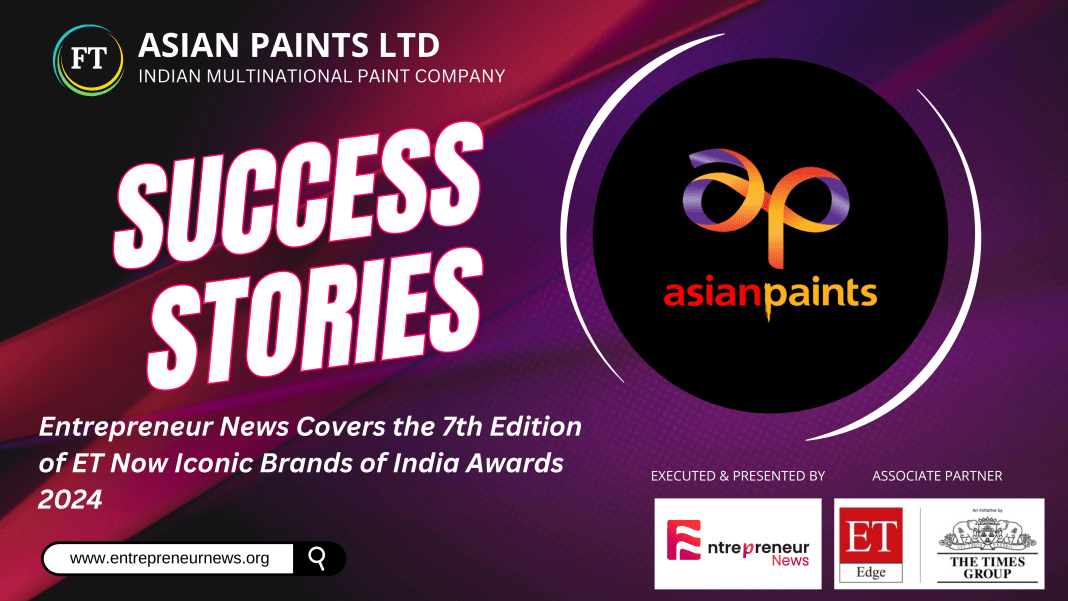In 1942, when India was still under British rule, four friends in Bombay (now Mumbai)—Champaklal Choksey, Chimanlal Choksi, Suryakant Dani, and Arvind Vakil—decided to embark on an entrepreneurial journey that would shape the future of the paint industry in India. This was a time when India was in the midst of its freedom struggle, and the economy was largely dominated by foreign brands. The British had placed a temporary ban on the import of paints, leaving the Indian market with limited choices: either Shalimar Paints or expensive foreign alternatives.
Seizing this opportunity, the four visionaries started a paint manufacturing company in a small garage, calling it “Asian Oil and Paint Company Private Limited.” What began as a small venture soon grew into one of the largest paint manufacturers in the world. Today, Asian Paints is a household name, with a market share of 53% in India and a presence in 16 countries across the globe.
Early Days and the Birth of Asian Paints
The founders of Asian Paints were driven by a simple yet powerful idea: to provide affordable, high-quality paint to Indian consumers. Their decision to enter the paint industry was largely influenced by the British ban on imports, which created a void in the market. With limited options, Indian consumers were in desperate need of a local alternative, and Asian Paints aimed to fill that gap.
In its early years, the company offered a modest range of five colors—black, white, red, blue, and yellow. Despite its humble beginnings, Asian Paints quickly gained traction, achieving revenues of Rs 3.5 lakh in its first year. By 1952, the company had grown significantly, with annual revenues reaching Rs 23 crore—a staggering amount for that time.
One of the key factors behind Asian Paints’ early success was its innovative distribution strategy. Instead of relying on large wholesalers, the company focused on smaller paint packages, which could be easily distributed across the country. This allowed them to reach a wider audience, including small retailers in even the most remote corners of India.
Marketing Innovation: The Creation of Gattu
In 1954, Asian Paints embarked on a groundbreaking marketing campaign that would forever change the way the brand was perceived. The company enlisted the help of legendary cartoonist RK Laxman to create a mascot that would represent the brand’s philosophy and appeal to the masses. The result was “Gattu,” a mischievous boy with a paintbrush and a bucket, who became the face of Asian Paints for decades.
Gattu was more than just a mascot; he was a symbol of the brand’s commitment to providing affordable, high-quality paint to working-class families. The tagline “Don’t lose your temper, use Tractor Distemper” became synonymous with Asian Paints’ popular product, Tractor Distemper, which was designed to be both durable and affordable.
The Gattu campaign was a resounding success, and the mascot quickly became a household name. The genius of this marketing strategy lay in its ability to connect with consumers on an emotional level. Gattu was relatable, and his playful persona helped humanize the brand, making it more approachable and trustworthy.
Rapid Expansion and Market Leadership
By the late 1950s, Asian Paints was growing at an unprecedented rate. The company’s innovative marketing strategies and commitment to quality helped it secure major clients, including the British company Balmer Lawrie. However, the real turning point came in 1967 when Asian Paints became the leading paint manufacturer in India, surpassing all its competitors.
This achievement was no small feat, considering the competitive landscape of the time. Asian Paints’ success was driven by its ability to adapt to changing market conditions and its relentless focus on customer satisfaction. The company continued to innovate, introducing new products and expanding its reach to international markets.
In 1977, Asian Paints took its first step towards becoming a global brand by establishing a manufacturing plant in Fiji. This marked the beginning of the company’s international expansion, which would eventually see it operating in 16 countries across the world.
Staying Ahead of the Curve: Technological Advancements
One of the key reasons behind Asian Paints’ sustained success is its ability to stay ahead of the curve when it comes to technological advancements. In the 1980s, the company became the first in the industry to launch a television commercial, which helped it reach a wider audience and solidify its brand presence.
Throughout the 1990s, Asian Paints continued to innovate by introducing superior products and expanding its portfolio to include a wide range of interior and exterior paints, wood finishes, and industrial coatings. The company also embraced the digital revolution early on, launching its first website in 1998. This move allowed customers to explore different products, compare prices, and even choose paints based on their budget—further enhancing the brand’s accessibility.
In recent years, Asian Paints has continued to leverage technology to stay ahead of its competitors. The company has a strong presence on social media platforms like Facebook, Twitter, and YouTube, where it engages with customers and shares valuable content related to home improvement, interior design, and color trends.
Diversification and New Ventures
Asian Paints’ success is not just limited to paints; the company has diversified into several related segments, including home décor, kitchen and bath fittings, and even surface coatings for industrial applications. This diversification strategy has helped Asian Paints maintain its market leadership while tapping into new revenue streams.
For example, the company introduced Royale Play, a range of textured paints that cater to the growing demand for premium home décor products. Similarly, the company’s entry into the kitchen and bath fittings market has allowed it to offer a complete home solution to customers, further strengthening its brand equity.
Recognition and Awards
Over the years, Asian Paints has received numerous accolades for its outstanding performance and commitment to excellence. In 2004, the company was awarded the prestigious “Sword of Honour” by the British Safety Council for its focus on workplace safety. Additionally, Asian Paints has been featured on Forbes’ list of the Best Under a Billion Dollar Companies, a testament to its global success.
Moreover, in 2024, Asian Paints was honored at the 7th Edition of the ET Now Iconic Brands of India awards, further cementing its position as a market leader. The company’s ability to adapt to changing consumer preferences, embrace technological advancements, and maintain a high standard of quality has earned it a place among the most respected brands in the world.
The Future of Asian Paints
As Asian Paints continues to evolve, it remains committed to its core values of innovation, quality, and customer satisfaction. The company is constantly exploring new ways to enhance its product offerings and improve its customer experience. With a strong focus on sustainability, Asian Paints is also working towards reducing its environmental impact by developing eco-friendly products and adopting energy-efficient manufacturing processes.
Looking ahead, Asian Paints is poised for continued growth, both in India and internationally. The company’s ability to anticipate market trends, embrace new technologies, and diversify its product portfolio will ensure its long-term success in an increasingly competitive global market.
In conclusion, Asian Paints’ journey from a small garage in Mumbai to a global paint giant is a testament to the power of innovation, perseverance, and customer-centricity. As the company continues to expand its footprint and explore new opportunities, it remains a shining example of what can be achieved with the right vision and determination.





